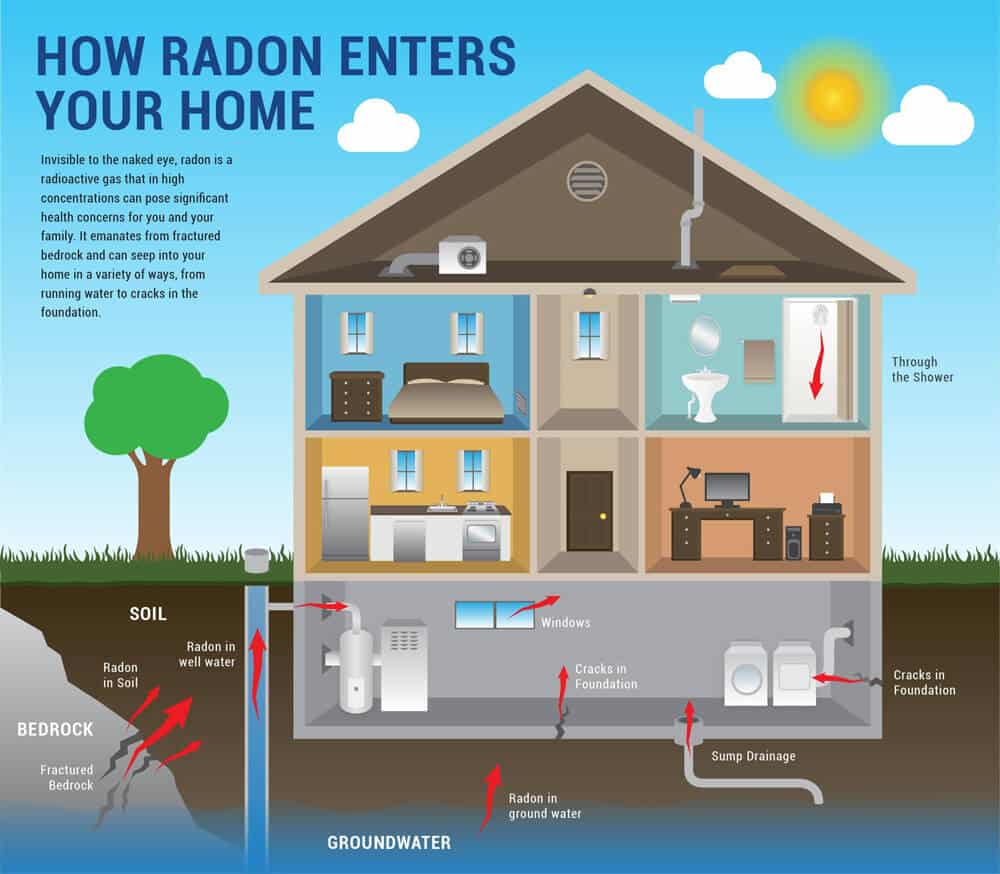How Radon Gas Endangers People in Their Own Houses
United States EPA
Is radon really bad for you?
Breathing radon over time increases your risk of lung cancer. Radon is the second leading cause of lung cancer in the United States. Nationally, the EPA estimates that about 21,000 people die each year from radon-related lung cancer. Only smoking causes more lung cancer deaths.
Youngsters that are house all day are at much more danger for inhalation. Discover why radon is dangerous and why it's so difficult to discover without testing. The study appears the fatality knell of the straight, no limit theory, while unlocking to the concept of hormesis-- the idea that low levels of ionizing radiation might actually benefit you.
Just concerning 20% of all schools nationwide have done testing, despite the fact that the EPA recommends that every college be checked. These numbers are perhaps not high enough to make sure security of the majority of youngsters from elevated radon direct exposures. For exposure requirements to be effective, they need to be established for those most vulnerable. The main course of exposure to radon and its children is inhalation.
Is radon mitigation really necessary?
When radon gas enters the body, it exposes the lungs to small amounts of radiation. In small quantities, experts say this is harmless. However, in persistent exposures or larger quantities, radon can damage the cells of the lining of the lungs, increasing a person's chance of developing lung cancer.
Radon mitigation systems do an excellent task of maintaining radon out. A growing number of house purchasers are seeking residences with radon services in place.
- Radon gas is a naturally-occurring byproduct of the radioactive degeneration of Uranium in the dirt.
- Relying on your geographic place, the radon levels of the air you breathe outside of your home might be as high as 0.75 pCi/L.
- The national standard of outdoors radon degrees is 0.4 pCi/L and also it is estimated by the National Academy of Sciences that exterior radon degrees trigger roughly 800 of the 21,000 radon caused lung cancer fatalities in the United States yearly.
- The United States EPA has placed it plainly, mentioning, "Any type of radon exposure has some threat of creating lung cancer cells.
How do you eliminate radon?
Possible symptoms include shortness of breath (difficulty breathing), a new or worsening cough, pain or tightness in the chest, hoarseness, or trouble swallowing. If you smoke and you know you've been exposed to high levels of radon, it's very important to quit smoking.
The EPA recommends doing a 2nd examination to verify the first searchings for if the examination results indicate radon levels at or above 4 pCi/L (picocuries per litre). Homeowners can take steps to decrease the radon concentration if the standard of the two temporary radon tests is 4 pCi/L or better. The EPA keeps in mind that because there is no safe level of radon gas exposure, reducing radon to listed below 2 pCi/L likewise helps in reducing the number of radon-related lung cancers. Breathe sufficient radon throughout the years, as well as it can raise your risk of lung cancer cells.

What are the symptoms of radon in your home?
If a person has been exposed to radon, 75 percent of the radon progeny in lungs will become "harmless" lead particles after 44 years. When an alpha particle damages a cell to make it cancerous, the onset of lung cancer takes a minimum of 5 years but most often 15 to 25 years, and even longer.
However, when radon obtains entraped inside-- after getting in a home with joints in walls, cellar floors, foundations and other openings-- it might focus at dangerous levels. Actually, radon is the second leading root cause of lung cancer, responsible for an estimated 21,000 fatalities each year in the USA, contributing to lung cancer's status as the # 1 cancer killer. When breathed http://erickndka327.bravesites.com/entries/general/what-is-radon-gas-is-it-dangerous- in into the lungs, it can harm DNA and create lung cancer. The EPA's recommended level for radon mitigation is 4.0 pCi/L or above. It is however a worthy gas with no chemical fondness but is conveniently influenced by air motions as well as stress.
How long does it take for radon to cause cancer?

Fact: Click here! You will reduce your risk of lung cancer when you reduce radon levels, even if you've lived with an elevated radon level for a long time. Keep in mind that radon levels below 4 pCi/L still pose some risk and that radon levels can be reduced to 2 pCi/L or below in most homes.